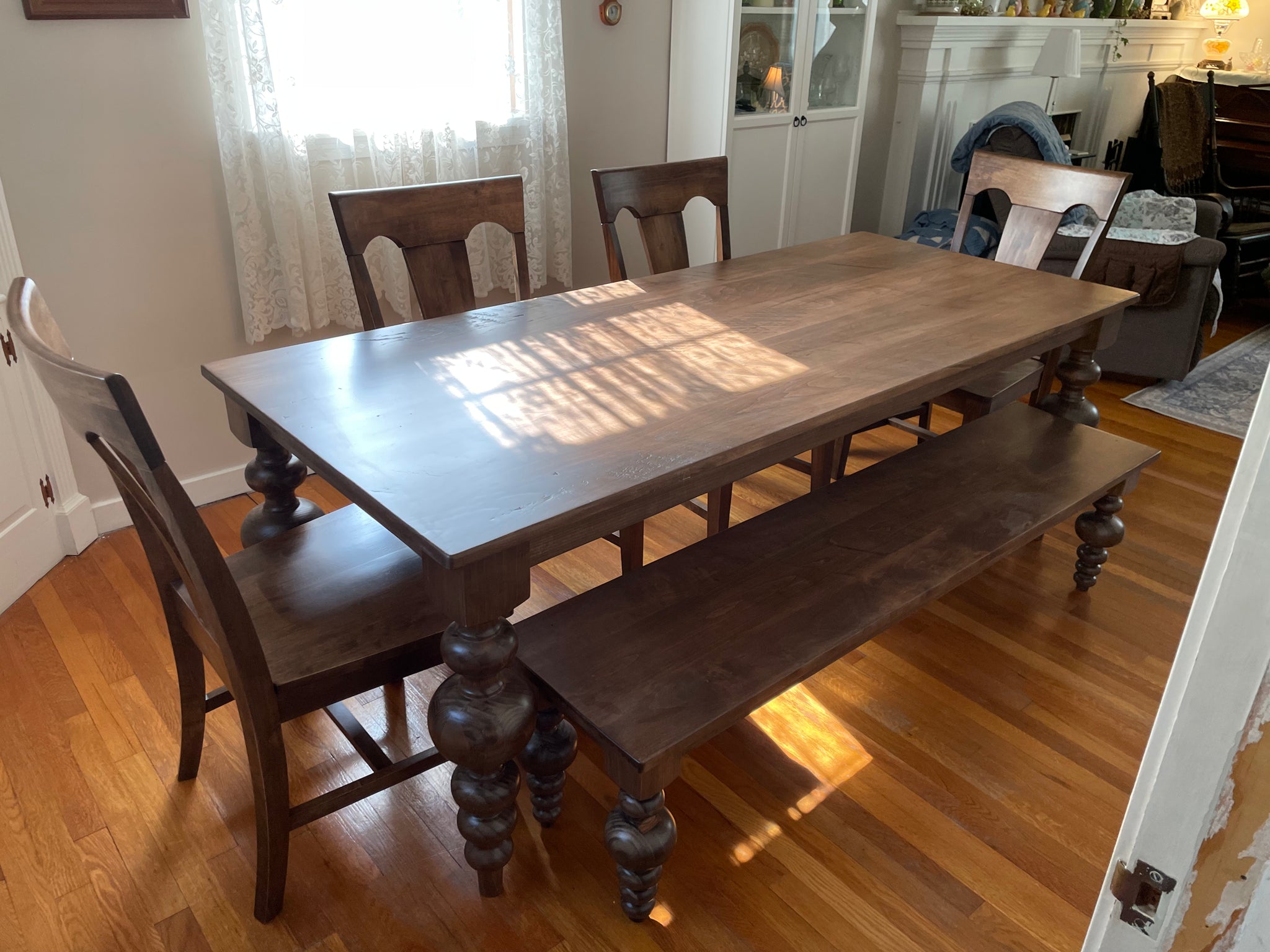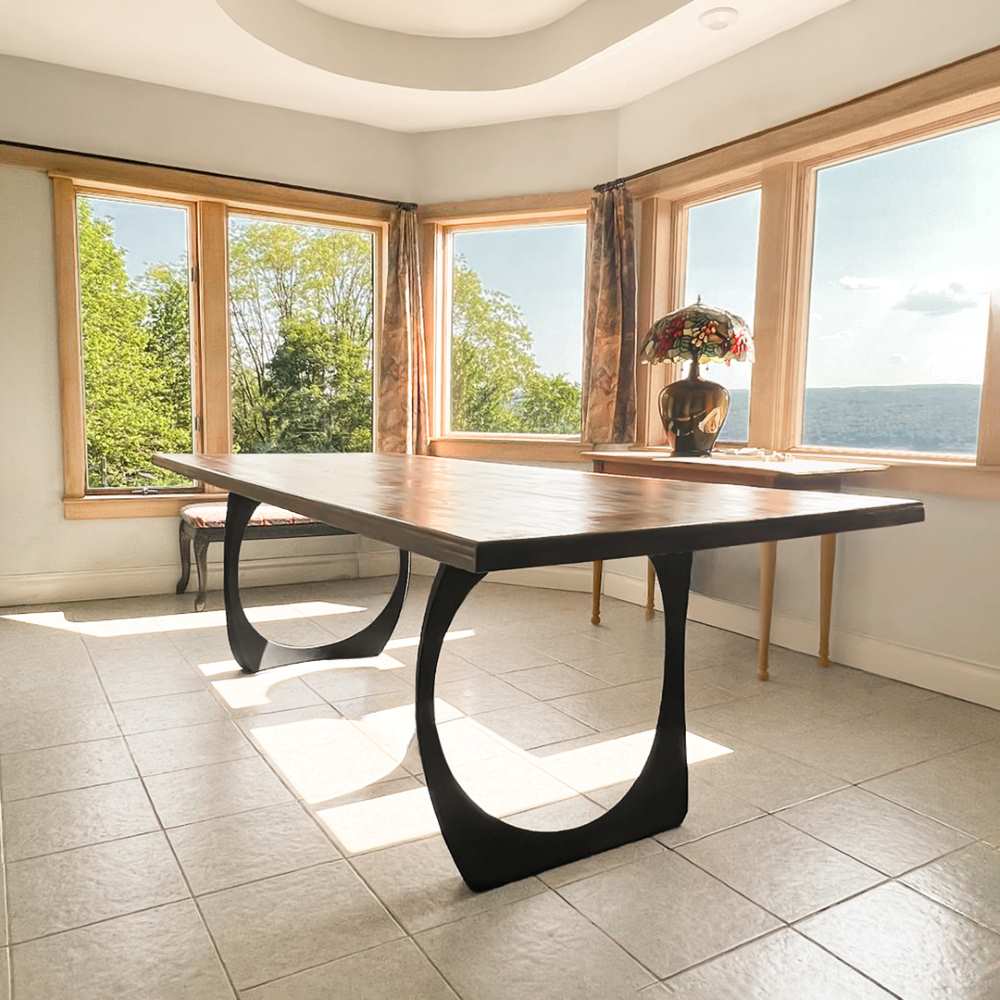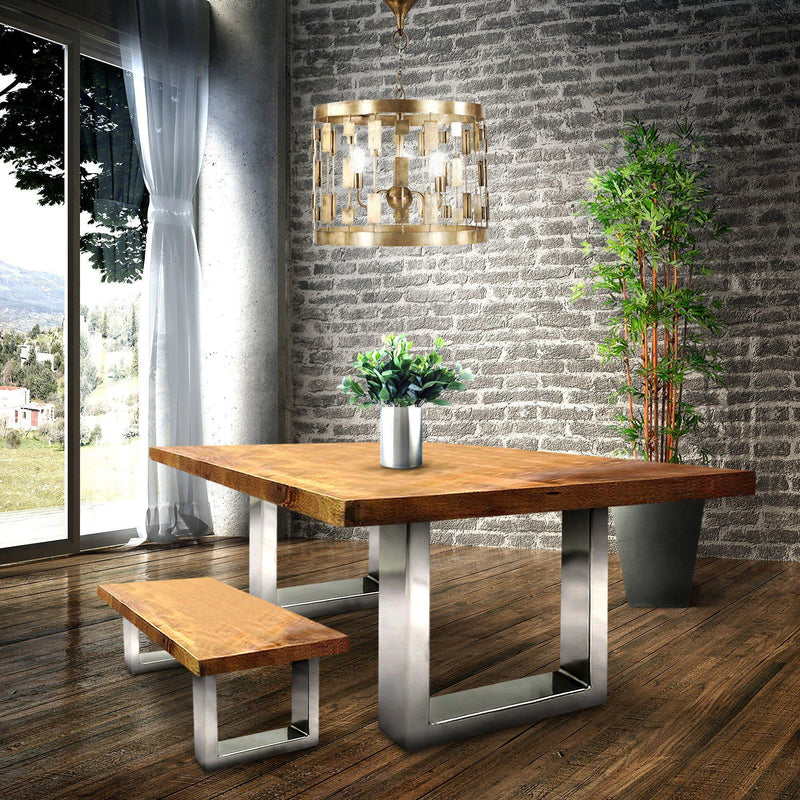Professional Tips for Setting Up Dining-room Table Legs for Optimum Stability
When it concerns mounting dining-room table legs, attaining maximum security is paramount for both capability and visual appeals. The process starts with selecting the right products and equipment, adhered to by careful placement and factor to consider of weight circulation. Each action plays an important role in guaranteeing that the finished product stands up to everyday usage without endangering safety or design integrity. Nevertheless, understanding the subtleties of these components can dramatically influence the overall result. What certain techniques can improve security even better?
Choose the Right Legs
When picking the appropriate legs for your dining-room table, it is vital to consider both performance and aesthetic appeals. The legs you select will dramatically impact the general layout and stability of the table. Initially, review the table's intended use; if you anticipate regular celebrations, tougher legs, such as those made from strong timber or steel, may be preferable, as they use boosted durability and support.
Following, consider the height and style of the legs in connection with the tabletop. Basic dining tables commonly vary from 28 to 30 inches in height, so guarantee the legs align with this criterion for comfort. The design of the legs need to match the style of the tabletop-- whether it be contemporary, rustic, or conventional. Tapered legs can add a modern touch, while transformed legs might convey an extra traditional aesthetic.

Select Appropriate Equipment
Just how can the best hardware improve the stability and longevity of your dining-room table? The choice of appropriate hardware is important to guaranteeing that the legs of your table are safely connected and able to stand up to regular usage. High-grade screws, screws, and braces give the necessary toughness to sustain the weight of the table, as well as any added lots placed upon it during celebrations or dishes.
When selecting screws, decide for those made from sturdy materials such as stainless steel or brass, which withstand deterioration and preserve stability in time. The length of the screws is just as crucial; they need to penetrate deeply into the table's framework without endangering honesty. For bolted connections, think about making use of lock washing machines to avoid loosening due to vibration or activity.
In addition, making use of edge brackets can add extra assistance, specifically for bigger tables or those with larger tops. These brackets distribute weight uniformly and aid keep the table's shape. Making sure that the hardware you select is proper for the details materials of your table will certainly better improve its overall stability and longevity, permitting you to enjoy your dining experience for many years to find.
Ensure Proper Alignment
Correct placement of dining room table legs is important for both aesthetic appeal and functional security. Misaligned legs can bring about an uneven table top, which may not only be visually uninviting however also jeopardize the table's usability. To attain optimal positioning, start by gauging the range from the table's corners to try this web-site the leg add-on factors. This makes sure that each leg is positioned equidistant from the edges, producing a balanced appearance.
Make use of a degree during setup to verify that each leg is perpendicular to the table top. It is advisable to note the desired leg settings on the underside of the table with a pencil or covering up tape before safeguarding them.
Moreover, double-check the placement after the preliminary screws are tightened up, as changes might be needed before totally safeguarding the hardware. By prioritizing appropriate alignment, you not just improve the table's overall design but additionally ensure that it stays steady and practical for several years to come.

Take Into Consideration Weight Circulation
After ensuring proper positioning of the dining-room table legs, it is essential to consider weight circulation to boost stability and capability. dining room table legs. Correct weight distribution is critical in preventing guaranteeing and tottering that the table can sustain its intended tons without danger of tipping or collapsing
When placing the legs, ensure they are placed at equivalent distances from the facility of the table to equally disperse the weight across the framework. Take into consideration the weight of the table top and any things that will regularly relax on it, such as ornamental items or tabletop home appliances. Tables with much heavier surfaces need to preferably have legs positioned closer to the corners, as this makes best use of the base of assistance and reduces the threat of instability.
Additionally, if the table is intended for usage in a high-traffic area, consider making use of heavier products for the legs or including maintaining elements, check these guys out such as cross-bracing or a lower rack - dining room table legs. These changes can help keep equilibrium and prevent moving throughout use. Ultimately, a well-considered weight distribution method will significantly enhance the table's general efficiency, guaranteeing it continues to be a attractive and practical focal point for your eating space
Examination Security Before Use
Examining the stability of the eating space table before usage is an essential action that needs to not be ignored. Ensuring that the table is safe and steady can prevent crashes and extend the life-span of the furniture. Begin by using gentle pressure to numerous points on the table surface. Push down on the center and after that along the sides, shifting or observing any type of wobbling. If the table reveals instability, determine the legs or joints that might need adjustment.
Following, inspect that all screws and bolts are tightened correctly. Loosened connections can result in instability and potential damages gradually. If essential, utilize wood adhesive on joints to improve stability, ensuring to permit appropriate drying time.

Verdict
To conclude, the installment of dining-room table legs calls for cautious consideration of products, equipment, weight, and alignment distribution to attain maximum security. By picking high-quality fasteners and strong legs, making sure specific positioning, and distributing weight evenly, the structural stability of the table can be substantially improved. Performing a security test before routine usage even more makes sure that the table will certainly endure day-to-day pressures, thus giving a dependable and risk-free dining experience.
When it comes to installing dining area table legs, achieving maximum security is paramount for both functionality and aesthetic appeals. The legs you choose will significantly impact the general style and stability of the table (dining room table legs). Standard dining tables usually range from 28 to 30 inches in height, so make certain the legs straighten with this criterion for convenience.Appropriate positioning of eating area table legs is crucial for both visual allure and functional security.In conclusion, the installation of dining room table legs needs mindful factor to consider of materials, alignment, hardware, and weight circulation to accomplish optimum security
Comments on “Simple Steps to Replacing Old Dining Room Table Legs with New Ones”